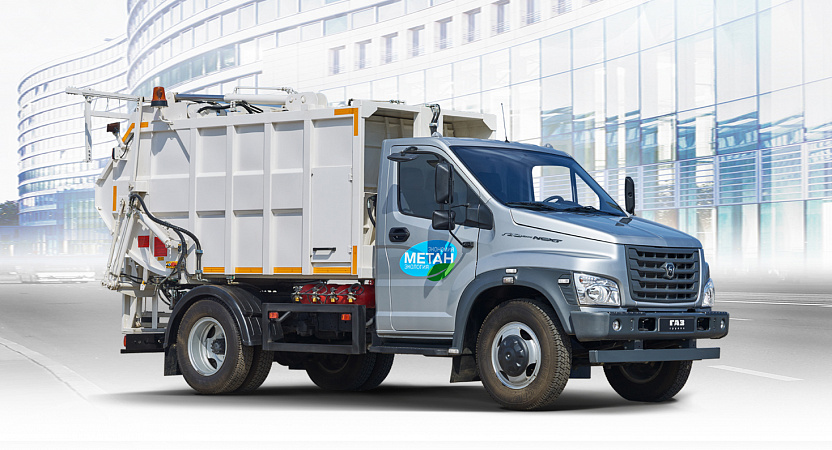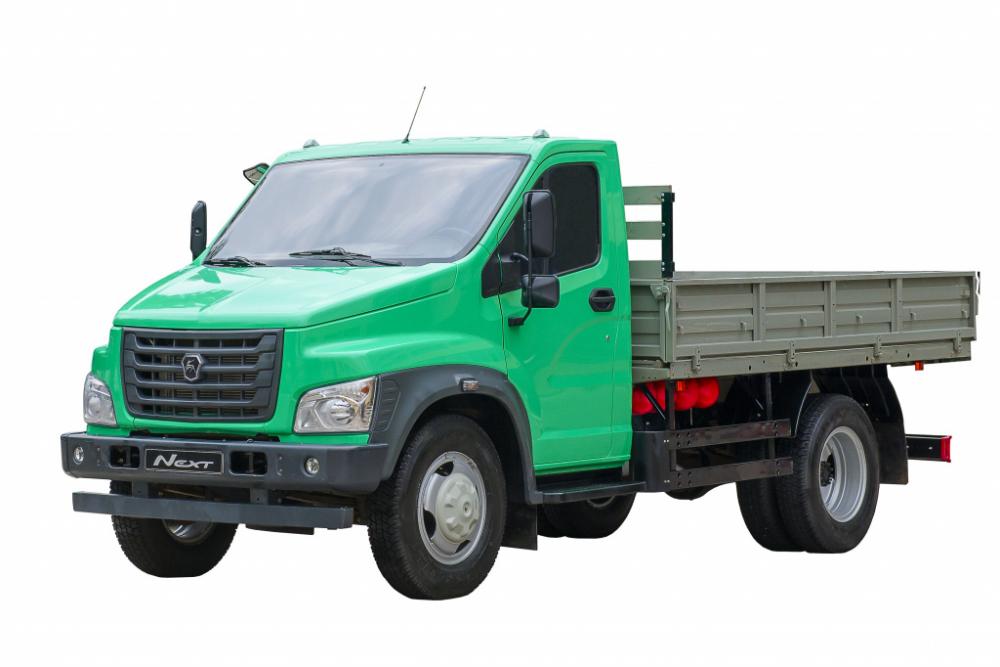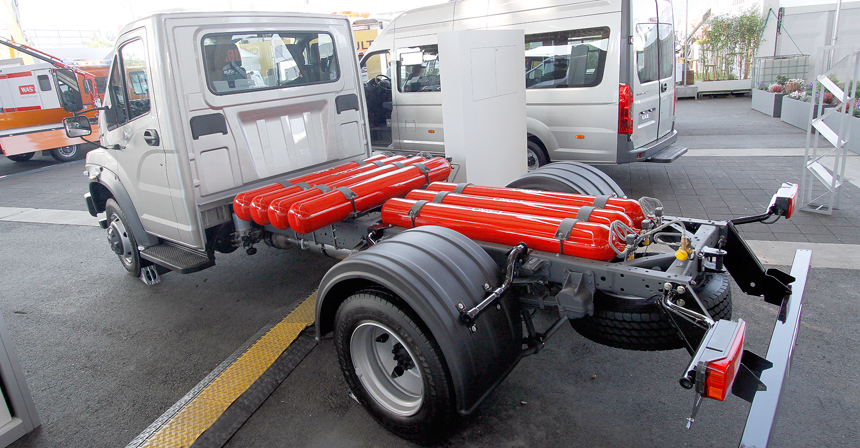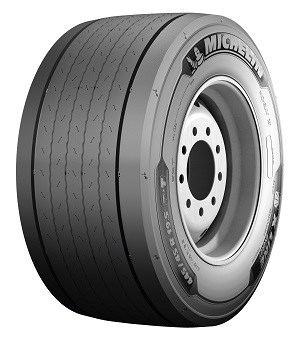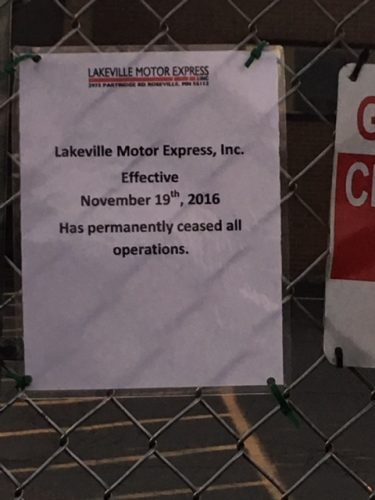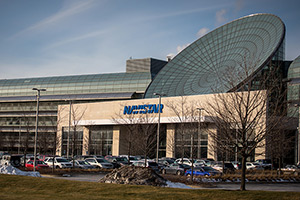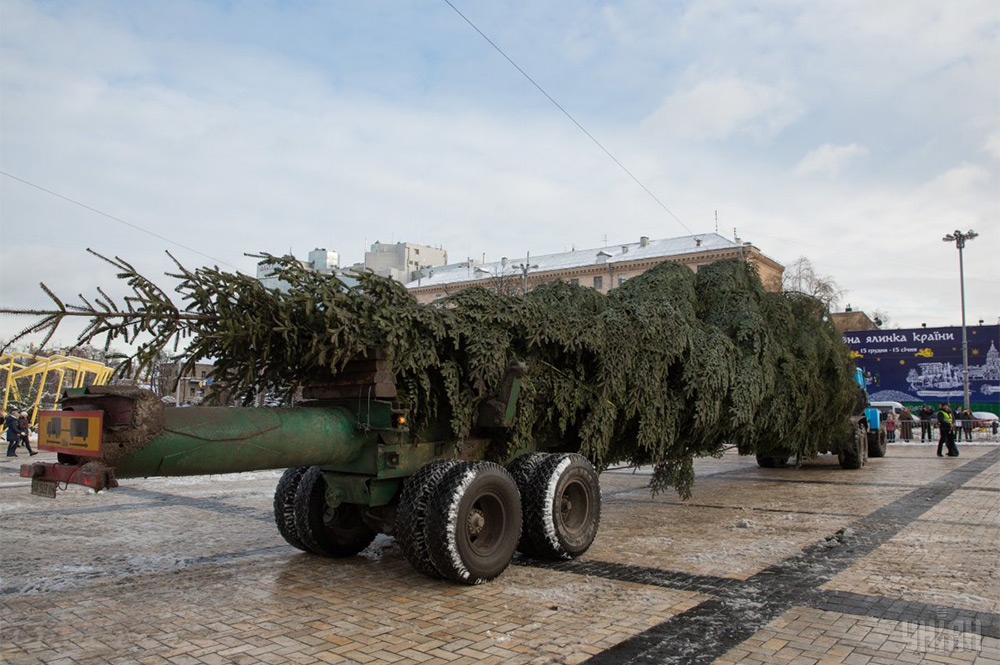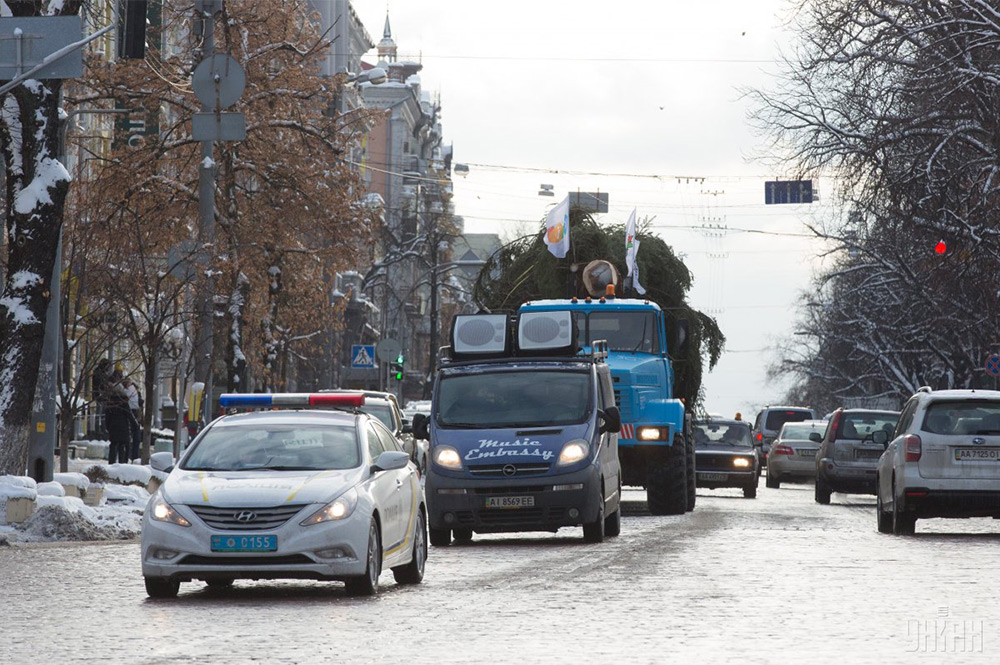
kscarbel2
Moderator-
Posts
18,905 -
Joined
-
Days Won
114
Content Type
Profiles
Forums
Gallery
Events
Blogs
BMT Wiki
Collections
Store
Everything posted by kscarbel2
-
http://www.bigmacktrucks.com/topic/47138-egr-and-dpf-deletes-has-anyone-had-one-done/#comment-347732 http://www.bigmacktrucks.com/topic/46210-egrdpf-delete/#comment-340376
-
Prime Mover Magazine / December 12, 2016 Providing an incentive for fleets to carry out regular maintenance through a Fuel tax credit would help ensure vehicles meet emissions standards, the Australian Trucking Association (ATA) has suggested. Legislative change to the Fuel Tax Act's current maintenance and testing criteria would encourage more regular vehicle maintenance, said ATA Vice Chair Geoff Crouch. “Trucks need regular maintenance in order to meet emission standards and amending the eligibility for fuel tax credits would provide a powerful incentive for regular maintenance,” Crouch said. “Contained within the Fuel Tax Act are a set of environmental conditions that for trucking operators must meet to qualify for fuel tax credits. “A truck has to be manufactured on or after 1 January 1996, or meet one of three maintenance or testing criteria,” he said. When the Fuel Tax Act was first introduced, 61 per cent of the truck fleet was manufactured before 1996 and had to meet maintenance or testing criteria in order to claim fuel tax credits. In 2016 this has fallen to 33 per cent of the fleet. “The ATA supports the removal of the 1996 criteria, which would see the entire existing truck fleet needing to meet a maintenance or testing criteria in order to qualify for fuel tax credits,” Crouch said.
-
GAZ Group Press Release / December 12, 2016 The new GAZon NEXT CNG medium truck has entered into production. The truck is equipped with a state-of-the-art YAMZ-534 CNG powerplant meeting the latest global standards in power, torque, NVH (noise, vibration & harshness), emissions and fuel consumption. Production of the new YAMZ-534 CNG began at GG Yaroslavl Engine Plant on November 12, 2016. The application of compressed natural gas (CNG) reduces fuel costs by 40-50% as compared to the diesel version of the same engine resulting in significant operating efficiency gains. GAZon NEXT is a versatile multi-purpose medium truck designed for city and inter-city transport, vocational, utility and municipal operations. It combines high functionality, payload capacity, competitive price and low cost of ownership. Both standard and four-door "crew cab" configurations are available. With an 8.7 metric ton (19,180 lb) gross vehicle weight (GVW), the GAZon NEXT CNG can carry a 5 metric ton (11,023 lb) payload. The CNG version of the YAMZ-534 engine is rated at 149 horsepower at 2300 rpm, with a maximum torque of 490 Nm available from 1200 to 2100 rpm. Seven 72.8 m3 CNG bottles mounted under the body provide an operating range in excess of 370 kilometers (230 miles). The warranty for GAZon NEXT CNG, like the diesel version, is three years or 150,000 (93,206) kilometers. Related reading - http://www.bigmacktrucks.com/topic/47712-gaz-group-launches-cng-engine-range/#comment-352210 .
-
Gary Cohn Post: White House - Director of the National Economic Council Previous government experience: None Current position: President and COO of Goldman Sachs Age: 56 (Born August 27, 1960) Schooling: Cohn studied at Gilmour Academy, and received a Bachelor of Arts degree from American University's Kogod School of Business. Background: Investment banker Gary Cohn was born to an Eastern European family and raised in Shaker Heights, Ohio. Cohn is married and has three daughters. He lives in New York City. Cohn’s annual salary at Goldman Sachs was US$22 million in 2014. Cohn started his career at the home products division of U.S. Steel in Cleveland, Ohio. After only a few months at U.S. Steel, he left and started his career as an options dealer in the New York Mercantile Exchange. Cohn was recruited by Goldman Sachs in 1990. In 1996, Cohn was named head of Goldman Sach’s commodities department, part of Fixed Income, Currency and Commodities Division (FICC). In 2002, he was named head of the division. Since January 2004 Cohn was the co-head of global securities businesses and he was the co-head of Equities since 2003. Cohn was head of Goldman Sach’s global securities businesses from December 2003, and became President and Co-Chief Operating Officer, and director, in June 2006. Trump says Cohn will “put his talents as a highly successful businessman to work for the American people”. Trump was critical of Goldman Sachs during the presidential campaign and lambasted Democratic rival Hillary Clinton for giving paid speeches to the Wall Street giant. But Trump’s now chosen three people with ties to Goldman Sachs for his administration, including Steven Mnuchin, the Treasury secretary nominee, and Steve Bannon, Trump’s chief strategist and senior counselor.
-
HGVUK / December 12, 2016 Michelin has expanded its X Line Energy tyre range with the launch of six new sizes, enabling more truck fleets to benefit from its most fuel-efficient truck tyre generation’. Designed primarily for mega-volume trailers, car transporters and low height tractor units, the new additions are said to offer improved mileage, increased fuel efficiency and a lower rolling resistance compared to the previous generation of Michelin fuel-saving tyres in these sizes. The launch sees Michelin X-Line Energy multi-position tyres now available in 315/60R22.5, 295/60R22.5, and an all-new 355/50R22.5 size. Drive versions are offered in 315/60R22.5 and 295/60R22.5. The trailer range has been expanded with 445/45R19.5 fitments. All new sizes offer improved mileage potential over their predecessors, with the 315/60R22.5 and 295/60R22.5 all-position tyres projected by Michelin to offer 30 per cent and 17 per cent improved mileage potential, respectively. Michelin says the new sized will offer a fuel saving of 1.25 litres per 100km during the tyres’ first life – and up to 2.5 litres of fuel saved per 100km when the tyres are new. Guy Heywood, Commercial Director UK and Republic of Ireland at Michelin, says: “With fuel prices rising steadily, fleets are placing renewed focus on ensuring their vehicles are operating as efficiently as possible. The expansion of our X Line Energy range opens up a wealth of fuel-saving potential to more operators.” The new tyres’ efficiency is highlighted by their fuel efficiency rating under EU tyre labelling legislation. The new 315/60R22.5 all-position and 295/60R22.5 all-position tyres improve from a ‘C’ to a ‘B’ rating versus their predecessor, whilst the 315/60R22.5 drive and 295/60R22.5 drive tyres have improved from ‘D’ to ‘B’. The 445/45R19.5 trailer tyre has jumped from ‘C’ to ‘A’, whilst the all-new 355/50R22.5 all-position tyre has a ‘B’ rating. The new tyres are available on both the original equipment and replacement markets. For further information on the Michelin commercial vehicle tyre range visit http://trucks.michelin.co.uk/ .
-
Isuzu Commercial Truck of America Press Release / December 12, 2016 . . . . . .
-
Minnesota Trucking Company Padlocks Doors, Shutting Out 95 Workers
kscarbel2 replied to kscarbel2's topic in Trucking News
Teamsters allege carrier abruptly closed, then reopened under new name without notifying employees Commercial Carrier Journal (CCJ) / December 12, 2016 Following the sudden closure of a roughly 45-truck Minnesota-based carrier, the Teamsters Union has alleged the company reopened under a new name. The Teamsters have led protests against the new Finish Line Express. The union claims FLE siphoned resources and customers from Lakeville Motor Express. The Teamsters say the two are sister companies. In recent months, FLE has received LME’s management, trucks and equipment, the Teamsters allege. They also say numerous customers have told them an FLE truck has arrived after they called LME. Lakeville Motor Express employees found the gates locked when they arrived for work at the 95-year-old company in late November. Attached was a notice that stated, without elaboration, that the Roseville company “has permanently ceased all operations, effective Nov. 19.” Lt. Gov. Tina Smith condemned LME’s actions at a Dec. 2 rally held by the Teamsters, which represent 90 of its 95 employees. Earlier this fall, another regional LTL-carrier opened in Maple Grove after incorporating last May. The carriers have not responded to media inquiries after the (Minneapolis) Star-Tribune published the initial account Nov. 26. FLE Vice President Mike Sanford told the newspaper his company was not connected to LME’s closing. Sanford, who until recently was Lakeville’s VP, denied that the companies share ownership. That story also references a letter Teamsters received shortly after the shutdown from LME’s Kevin P. Deming, who blamed “heavy financial losses” for the closing. “Lakeville is out of cash and has no reserves to pay any amounts owed to employees or vendors at this time,” the Lakeside owner and CEO wrote. The union now is attempting to discourage customers from “continuing to utilize sister companies LME and FLE.” Members advocate asking clients if they “support the type of business practices used to hurt 95 families at Lakeville Motor Express?” They also have picketed FLE since the Lakeville shutdown. On Nov. 25, the National Labor Relations Board closed the company’s case against the Teamsters and accepted FLE’s request to withdraw the charge. A week earlier, the company had filed complaint with the board over union picketing. Lakeville is not protected under the federal Worker Adjustment and Retraining Notification Act. WARN requires companies with at least 100 employees to notify workers 60 days in advance of covered plant closings and mass layoffs. . -
Senate locks in restart rollback at deadline Fleet Owner / December 12, 2016 With less than hour to go before a midnight deadline, the U.S. Senate on Friday joined the House to enact a “fix” to the hours of service restart provision that restores the regulation to the pre-July 2013 version. Oh, and the vote also kept the government running. The annual funding bill for federal government, including the budget for the Dept. of Transportation, has been where Congress has blocked the restart since 2014, pending the completion of a DOT study on the real-world effectiveness of the 2013 HOS changes. The changes included requiring two overnight off-duty stretches between 1 a.m. and 5 a.m. to reset a truck driver’s workweek. Trucking has lobbied successfully for the suspension each year since, arguing that the change, in addition to disrupting the sleep schedules of some drivers, put more trucks on the road during the morning rush hour, increasing congestion and the risk of accidents. However, a drafting error in the language included in the 2016 funding bill left the HOS regulations in a potential legal limbo, prompting the need for the correction in the federal funding extension just passed. The correction also locks in the suspension, meaning it won’t have to be renewed each year until the study is complete. “It is now our hope that as an industry, we can put this issue firmly in the rearview mirror,” said American Trucking Assns. President and CEO Chris Spear. “Thanks to hard work by Congressional leaders of both parties and in both chambers, we are one step closer to having an hours-of-service restart rule that makes sense and puts safety first” The restart rollback has faced annual opposition, however. The Advocates for Highway & Auto Safety last week called the inclusion of the restart provision “a major assault on safety” that would “decimate” the HOS rule. “The House and Senate Republican leaders just delivered special trucking interests an early Christmas present,” said AHAS President Jackie Gillan. “Special interests succeeded in getting this rollback despite the growing problem of truck driver fatigue in the industry, unabated increases in truck crash deaths and injuries, and overwhelming public opposition. … It is simply unthinkable that any industry with such an abysmal safety record and responsible for so many innocent deaths and injuries could actually find so many willing partners in Congress to push their greedy anti-safety agenda.” And Sen. Cory Booker (D-NJ), who has led opposition to the rollback in the Senate, opened a forum on transportation security last week by echoing the AHAS position on truck crashes. Booker called on Congress “to work together” to address “one of the monumental areas in which people are dying in America.” Trucking, on the other hand, insists the 2013 HOS changes would increase the number of crashes involving commercial vehicles. “These rules, put forward based on a very limited laboratory sleep study, could have had serious negative safety impacts,” ATA’s Spear said. “The restart is an important tool for drivers, not to maximize driving time, but to have the flexibility to maximize off-duty time and time at home, and we are pleased that drivers will continue to have unrestricted access to it.” .
-
Sean Kilcarr, Fleet Owner / December 12, 2016 Body repair and paint technicians are one breed of truck technicians that’s getting harder to find, especially in the face of changing customer demands for such “specialized” disciplines. Dick Schmidt will tell you that 10 years ago, when a truck owner needed body repairs and/or paint work for their equipment, it had to be done with high quality – even if it meant taking extra time to do it. Nowadays, however, while the demand for quality remains the same, most truck owners want it done as fast and as cheap as possible – putting more pressure upon two technician disciplines that are already in short supply. “Because body filler and paint are so expensive these days, waste is a big concern – especially since truck customers want it fixed faster and cheaper so they can get their vehicle back on the road making money,” Schmidt, director of collision center operations for Rush Enterprises, told Fleet Owner here during the 2016 Rush Technician Skills Rodeo. “And it’s getting extremely hard if not harder to find these [body and paint] technicians compared to regular service techs,” he added. “It’s an almost old school [technician] discipline; it’s manual labor. Most young guys just don’t want to do this. They’d rather work with computers.” Schmidt said Rush operates some 26 collision repair facilities within its network of more than 100 dealerships; facilities spread out from “Los Angeles to Florida and Chicago down to McAllen, Texas,” he noted. The company employs some 250 to 300 body repair and paint technicians and five from each discipline – for a total of 10 technicians – are competing among the 165 semi-finalists at this year’s Rodeo, which is being held at the Henry B. Gonzalez Convention Center in downtown San Antonio. Complicating matters in the “real world” outside of the Rodeo are the cost pressures now being placed on truck body repair and painting services, Schmidt said – meaning technicians in those specialties must be able to work fast without sacrificing quality or overusing body filler and paint supplies, which drives up repair costs. For example, Marcy Fernandez, North American fleet manager for the commercial transportation segment at paint-maker Axalta, said some high-end truck paints can cost $3,500 a pint and with the large amount of surface area on a Class 8 truck to cover, overusing even a little bit can make the job unprofitable in a hurry. “It’s not like the automotive world, where paint is layered on coat by coat, which can help blend out imperfections,” he pointed out. “Because trucks are so big, we must take a ‘one-and-done’ approach – and applying one clean coat requires a [paint] technician to make the [paint] mixture just right and apply it with even-handed discipline.” Being forced to apply two coats due to a mistake can be a bottom-line buster, Fernandez added. “That turns a $1,400 job into a $3,000 job; you just can’t afford to use a quart or two extra anymore,” he stressed. “That’s why we also say there’s a little ‘magic’ needed when you are applying high-solid paints in one coat. Because if it is not done just right, you’ll see the imperfections.” John Spoto, national heavy duty commercial fleet manager for 3M, noted that the same pressures are being felt by body repair technicians, too. “For example, when you are repairing dents in this competition, we’re looking not just at the final appearance of the repair, but how much material did you use and whether you followed the proper procedures,” he emphasized. “Anyone can take a gallon of filler to repair a dent. But that is adding cost to the repair, and if there are lots of sanding scratches, it’ll require more paint to cover [the repair] as well.” Part of the problem, though, is that such “specialty” technicians as a group are older than the main population of truck technicians, said Spoto – averaging around 53 years in age. Thus he feels it will be doubly hard finding new entrants to this particular technician specialty because not only must they work primarily with their hands – something that’s becoming a “lost art” in the vocational schooling realm – but they must also bring a high degree of “mental focus” to the job as well. “Safety is the most important variable; you must make a repair that is safe and that will be durable,” Spoto stressed. “It is all about the will to improve yourself and the ability to apply your knowledge.” In many ways, he said the “mind must overcome the hands” in terms of learning for instance how much force to apply, or not to apply, when hammering out dents so as not to overstress the metal. Rush’s Schmidt added that body repair is becoming more complicated as more and different fiberglass and plastic materials are being used on trucks – just like what’s occurring in the automotive world – in lieu or steel and aluminum. “They are of better quality and more durable but as they [the OEMs] change the product, we need to change our repair and paint procedures,” he said. “What doesn’t change is the need for greater productivity, efficiency, and safety, while ensuring minimum waste of material.”
-
Wabash’s Aerodynamic Devices Reduce Drag by 30% on Navistar’s SuperTruck Trailer/Body Builders / December 12, 2016 Wabash National Corporation has released details about its trailer that was part of Navistar’s SuperTruck combination vehicle, including numerous aerodynamic trailer devices, three of which were based on the company’s commercially available Ventix DRS skirt, AeroFin XL tail device and nose fairing. The aerodynamic improvements reduced the trailer’s drag coefficient by more than 30 percent, according to Navistar. The U.S. Department of Energy’s SuperTruck program, a five-year research and development initiative, focused on improving freight efficiency (the amount of freight hauled per gallon of fuel used) by 50 percent compared to 2009 base model heavy-duty tractor-trailer vehicles. “Each of the trailer components selected for the SuperTruck combination vehicle were designed as concepts of what the next generation of aerodynamic devices will look like from Wabash National,” said Brian Bauman, vice president and general manager, Wabash Composites. “On the heels of the GHG2 rule being finalized, the industry will need to innovate in order to meet fuel efficiency standards in the future. The SuperTruck initiative allowed us to leverage our fleet-proven aerodynamic technologies and years of aerodynamic research and development to innovate with our customer in mind.” In addition to the aerodynamic device additions, Wabash National reduced the weight of the trailer by more than 2,000 pounds, compared to its 2009 dry van. All components used to reduce the weight of the trailer, such as wide-base single tires and a variety of aluminum componentry, are commercially available. Wabash National was part of Navistar’s SuperTruck team—one of four industry teams to participate in the SuperTruck program. Navistar unveiled its SuperTruck on September 28, reporting a 104 percent improvement in freight efficiency. The average tractor-trailer gets 6 miles per gallon; Navistar and Wabash National’s SuperTruck combination vehicle gets over 13 miles per gallon. According to the DOE’s Office of Science, approximately 20 percent of the SuperTruck efficiency improvements come from advances in the truck’s internal combustion engines, with further efficiency gains attributed to improved aerodynamics, weight reduction, reduced rolling resistance with high-efficiency tires and specialty equipment that limits idle time.
-
Navistar opens truck reconditioning center outside Chicago
kscarbel2 replied to kscarbel2's topic in Trucking News
Navistar Locates Used Truck Reconditioning Center at Prototype and Testing Facility Transport Topics / December 12, 2016 Navistar has reopened its Used Truck Reconditioning Center and co-located it at its prototype and testing facility in Melrose Park, Illinois. The move follows the closure and sale of its Indianapolis center. “One of the greatest advantages of a centralized reconditioning center is the ability to work hand-in-hand with the on-site product engineering and prototype team in order to fully understand product durability and use this knowledge to provide the highest level of service to our customers,” said Jeff Heichel, vice president, used truck operations. The center supports used truck activities by examining the Diamond Renewed reconditioning process to ensure a consistent product is available to all International dealers and Navistar’s own 15 Used Truck Sales Centers. Additional benefits of the center include the ability to handle large transactions in a timely fashion, ensure quality improvements and meet internal cost targets. It includes a wash bay, detailing and paint booth, welding room and a parts storage area. “We worked with the Local UAW to structure a competitive agreement which facilitated the work coming to Melrose,” said Kevin Turner, director of reconditioning operations. . -
Automotive News / December 12, 2016 Stocks balloon to 8-year high The stout sales discipline that's producing huge profits for General Motors has a troublesome side effect: GM's vehicle inventory has ballooned 28 percent since Aug. 1, to the highest level in nearly nine years. Crowded dealership lots could force the automaker to make more production cuts -- beyond the layoffs of 2,000 workers in Michigan and Ohio announced last month -- if demand slips in 2017. Heading into the slower winter season, the situation shapes up as a critical test of GM's determination to resist profit-eroding incentives and fleet deliveries as relief valves. It also reveals a stark contrast between GM's rosy outlook for the industry and the pessimism at Ford Motor Co., which has reduced output this fall with downtime at many of its North American plants. While Ford warns of threats to its financial goals and reduces inventory to prepare for a slowdown, GM's production and inventory keep climbing. GM's inventory as of Dec. 1, 873,200 vehicles, is the highest of any month since February 2008, when it had four more brands to support and less-flexible union contracts that made it tougher to adjust production as consumer demand rose and fell. "Incentives are elevated, residuals are declining, and rates are rising," Brian Johnson, an analyst with Barclays Capital, wrote in a Dec. 2 note to clients. "And while GM in particular may benefit in the months ahead from new product launches, it's important to recognize that GM's inventory is elevated at the moment, and it wouldn't surprise us if they need to announce another production cut -- which could pressure the stock." Camaros galore GM officials acknowledge that the company has more inventory of some vehicles than it wants. In November it said plants in Lordstown, Ohio, and Lansing, Mich., where workers build the Chevrolet Cruze and Camaro and two Cadillac sedans, would lose their overnight production shifts in January. The move amounts to GM's first significant layoffs since 2010, when the company was streamlining operations after bankruptcy. As of Dec. 1, GM had a 177-day supply of the Camaro and about 120 days' worth of the three other affected nameplates. Average for the industry was 73 days, more than the 60-day supply that executives and analysts say is ideal. On those vehicles, "we have an oversupply -- there's no question about it," said GM spokesman Jim Cain. "We're going to be living with high days supply of those vehicles until the shift change can work its way through the system." Cain wouldn't rule out additional production cuts, but he disputed any notion that the excess would revive the destructive habits of Old GM. He said GM is strategically stockpiling crossovers ahead of impending redesigns and can't keep up with demand in some segments, including midsize pickups and large SUVs. New products "We're pretty optimistic that we're going to continue growing retail share and the industry is going to stay near these record levels," Cain said. "Carrying higher inventory is actually good business. We feel like we've got a real opportunity to keep improving our results." GM told analysts Oct. 25 that it was increasing production "marginally" in the fourth quarter. It no longer reports North American output publicly, but Automotive News estimates that GM produced 14 percent more vehicles in October than a year earlier and 18 percent more in November. "What's really driven the increase is filling out inventory on newly launched products and new entries that we didn't have before, like the [Cadillac] CT6 or the [Buick] Envision as an example," GM CFO Chuck Stevens said in an Oct. 25 conference call with analysts. "Our inventory levels will be dictated by matching supply with demand. We will continue to watch inventories closely, especially cars, and will take actions if and when required." Ford, on the other hand, after building 10 percent more vehicles in the first half of the year, produced 12 percent fewer from July through November as its forecast shifted. Ford CEO Mark Fields has said the company is merely being proactive and realistic to keep itself out of trouble. "It's still a very healthy industry by historical standards," Fields told Automotive News in October, "but there are stresses in it, and we're getting ahead of that. 4-month spike Ford started 2016 with more inventory than GM despite having fewer nameplates and lower market share, but GM entered December with about 224,000 more vehicles in stock than Ford, the biggest disparity between the two automakers in four years, according to the Automotive News Data Center. Until 2007, GM regularly carried inventory of more than 1 million vehicles, given that it had to pay workers at idled plants almost as much as when the assembly lines were running. A deal tied to its federal bailout in 2009 eliminated the Jobs Bank, and that change, combined with the permanent closure of some plants, cut inventory to fewer than 400,000 vehicles later that year. After rising with the industry's recovery, GM's stockpile declined gradually from early 2014 through the end of last year, before beginning to spike in August. The 28 percent gain since then is the company's largest four-month jump in inventory since the aftermath of GM's wildly popular employee-pricing discounts in 2005.
-
Automotive News / December 12, 2016 Grand Wagoneer, redesigned Ram heavy-duty pickup delayed Fiat Chrysler dealers will have to wait a bit longer for two highly anticipated big-ticket vehicles: a fully redesigned Ram heavy-duty pickup and a luxury SUV for Jeep, the Grand Wagoneer. Sources told Automotive News that FCA's Ram brand will not redesign its current heavy-duty pickups onto its new DT pickup platform in 2018 but instead will keep the same body-in-white and refresh the existing DS-based model. Meanwhile, the automaker has placed a hold on its development of the Jeep Grand Wagoneer luxury SUV, supplier sources say. The vehicle has been on Jeep's product plan since 2014 and was to boast three rows of seats and a six-figure price tag. It is unknown why these actions on important products for FCA's two most profitable brands are taking place; FCA has refused to comment. The automaker is in a financial race to erase nearly $7 billion in net debt that was on its books at the end of the third quarter. CEO Sergio Marchionne has said he plans to retire in 2018 and wants to leave the global automaker generating billions of dollars in free cash flow annually. To do that, the company is, in part, undergoing a major revamp of its North American manufacturing footprint in order to build more Jeep and Ram SUVs and pickups and fewer slow-selling sedans. It has also spent billions of dollars to resurrect the Alfa Romeo premium sport brand, introducing a new Giulia sedan and Stelvio crossover, neither of which is on sale yet in the U.S. Through the first nine months of 2016, FCA said it had generated $1.49 billion in global profits. Saving cash Delaying or abandoning its plan for what FCA called in 2014 a "major update" of its heavy-duty Ram 2500 and 3500 pickups in 2018 will save FCA money on a changeover of its heavy-duty pickup plant in Saltillo, Mexico. Saltillo is FCA's only heavy-duty pickup factory, so keeping the current truck going with only a freshening will also ensure that Ram heavy-duty pickups remain available to dealers in an uninterrupted supply. But the delay will also leave the Ram 2500s and 3500s with a significantly older design than their heavy-duty competitors from top rivals Ford and General Motors. Ford, for example, just redesigned its heavy-duty pickups this year, boasting improved towing capabilities and better fuel economy. In its five-year business plan presented in May 2014, Ram had forecast what it called a "major update" for its heavy-duty pickups and chassis cabs in 2018. FCA has since dramatically altered its business strategy, abandoning U.S. production of low-profit cars to focus primarily on building more pickups and SUVs, taking advantage of sweeping changes in consumer preferences. The DS-based Ram 2500 and 3500 pickups were first introduced in 2010. They have been refreshed to various degrees in the intervening years, expanding their capabilities amid a customer base that is about 75 percent commercial, according to the brand's 2014 business plan. FCA reports combined sales of light-duty and heavy-duty Ram pickups each month, and said in 2014 that about a quarter of the brand's pickup sales are heavy-duty models. Through November, Ram pickup sales are up 8.1 percent. '$140,000 Jeep' The development hold on the Jeep Grand Wagoneer is surprising in part because FCA executives have been unusually forthcoming about the vehicle compared with the company's usual practice of refusing to comment on future product plans. In late June, Jeep brand head Mike Manley told reporters that the Grand Wagoneer would push the premium boundaries of the SUV brand. He elaborated at the Paris auto show, telling reporters that pushing the Grand Wagoneer "up to $130,000 to $140,000 may be possible." The Grand Wagoneer was initially scheduled to be launched in 2018 but was pushed back last year to 2019 so the vehicle could be co-developed with the next-generation Jeep Grand Cherokee, Marchionne said last year. The key to the Grand Wagoneer's most recent delay may lay in the constraints FCA is under with its North American manufacturing plants and the company's ongoing product shift away from passenger vehicles. During its negotiations with the UAW in 2015, FCA unveiled a product plan that called for the unibody Grand Wagoneer to be built at the company's Warren Truck Assembly plant, after that plant's product, the Ram 1500 pickup, was redesigned and moved to the nearby Sterling Heights Assembly plant. But building the Grand Wagoneer at Warren would require the plant to be completely retooled from body-on-frame assembly to unibody assembly. That's a large added expense for an automaker already paying to retool two unibody assembly lines at Sterling Heights and in Toledo, Ohio, in 2017 to body-on-frame production. FCA already builds a three-row crossover -- the Dodge Durango -- off of the current Jeep Grand Cherokee platform at its Jefferson North Assembly plant in Detroit. That plant's capacity is already maxed out, however, meaning FCA could not easily add another product there without incurring major expenses or disruptive production changes. Prior to being run by Fiat, Jeep produced a three-row, high-end SUV off of the Grand Cherokee platform, the Jeep Commander. It did not sell well, suffering in part because its third-row seating lacked sufficient legroom. Marchionne hated the Commander as well, telling reporters in 2011: "That car was unfit for human consumption. We sold some, but I don't know why people bought them."
-
-
-
KrAZ Delivers National Christmas Tree to Ukraine’s Capital
kscarbel2 posted a topic in Trucking News
KrAZ Trucks / December 5, 2016 The Christmas and New Year holidays are on the horizon and everybody young and old are waiting for their favorite winter holiday. Contributing to the occasion, a new KrAZ model 6446 all-wheel-drive tractor, popular with Ukraine’s logging industry, was chosen to retrieve an 86-year-old 26-meter-tall fir tree from the Ivano-Frankovsk region for public display in the center of Sofiyskaya Square in Kiev where holiday celebrations will take place. A KrAZ-255B crane truck, the legendary predecessor to the 6446, supported the tree’s mounting. Few heavy trucks are capable of traveling deep into the forest to retrieve such a tree, but the 6x6 model 6446 was easily up to the task with its famous off road credentials. The 6446, with a gross combination weight rating of 34 metric tons both on and off road, excels in forestry applications. Very soon, the huge tree will be decorated with thousands of decorations made in Yavorov, and wrapped with 3 kilometers of lighting. The Christmas tree opening will take place on Monday, December 19, on the day of St. Nicholas. . -
Hino Trucks Press Release / November 25, 2016 “We will be aiming to win our 8th straight championship in our class with a 1-2 finish, and to join the group of leading finishers in the overall trucks category.” Team holds event announcing entry in Dakar Rally 2017. .
-
- 1
-

-
Owner/Driver / December 9, 2016 The best photos and coverage from Victoria's Castlemaine Truck Show held in November The 2016 Castlemaine Truck Show proved once again why it is the premier Victorian truck show. Held at the Campbell Creek recreation reserve on November 19-20, the show attracted a wide variety of trucks from brand new trucks, customised trucks, working trucks and vintage trucks. One of the beauties of the show is its laid back atmosphere with many arriving on Friday afternoon and setting up camp for the weekend. It’s a friendly and welcoming crowd with many regulars attending year after year. The Rotary Club has now held 28 truck shows and together with other local service clubs and organisations provided everything that is needed for a great weekend. The winner of the Rig of the Day on Saturday was Troy McLean with his Kenworth T908. Sunday is the big day commencing with a truckies’ breakfast and then the convoy through Castlemaine. The main street is lined with residents and the sounds of truck horns can be heard all over the district. As crowd numbers grew, so did the intense heat when the sun came out, thankfully there were some cloudy patches during the day. There were raffles over both days with a bar fridge on offer and an auction on Sunday afternoon. The standard of presentation of trucks was excellent and as Castlemaine is known as a truck town, the American marquees had new trucks on display. The winner of Truck of the Show was Leo Kelly and his impeccably restored W model Kenworth. Once again Castlemaine put on a top show, it’s a big effort but the rewards are great with Rotary using the raised $9,965 to assist with valuable community causes. Photo gallery - https://www.ownerdriver.com.au/events-news/1612/castlemaine-truck-show-2016
-
Colorado Announces Energy-Transfer Highway Project
kscarbel2 replied to kscarbel2's topic in Trucking News
Electric Trucking Charges Up The Wall Street Journal / December 8, 2016 In a pilot project, vehicles equipped with ‘receiving coils’ will draw power from another coil buried in the road in Colorado Officials in Colorado are planning a public-road test of battery-charging technology capable of powering electric trucks while they drive. In the pilot project, believed to be the first of its kind in the U.S., vehicles equipped with “receiving coils” will draw power from another coil buried in the road. The Colorado Transportation Department and infrastructure developer Aecom Inc. are scouting potential sites, including busy roads near Denver International Airport, with a goal of launching in 2018. Heavy-duty electric trucks remain a rare sight on highways, in part because they need to make frequent stops to recharge and must carry heavy, expensive batteries. The pilot’s developers say their goal is to extend the distances electric trucks can drive and reduce the bulkiness of in-vehicle batteries. “It’s one of those, ‘if you build it, they will come’ things,” said Peter Kozinski, director of Colorado’s RoadX program, a state fund aimed at using new technologies to ease congestion and improve road safety. Under terms reached earlier this week, RoadX will pay Aecom $200,000 to help identify a location for the pilot, design the in-motion charging grid and find electric-truck partners to participate in the testing phase. They will license the technology from researchers with the Sustainable Electrified Transportation Research Center, or SELECT, at Utah State University, who have been conducting their own tests with a bus on a closed loop track. The Colorado project is slated to begin construction by the end of 2017 and start testing by the end of 2018. Data collected during the testing phase will provide insight into how well the technology works under real-world conditions, the researchers said. Mr. Kozinski said they are considering several sites in Denver for the project, including an area near the airport with heavy freight traffic. The Colorado pilot will focus on freight-moving vehicles because they emit the most pollution and supporting their shift to electric power could have a big impact on air quality, the developers said. The charging equipment can either be built into new trucks or affixed to electric vehicles as a retrofit, but it isn’t cheap, experts say. Nor is the technology and construction needed to outfit miles of roadway. “The cost of retrofitting roads around the country, even if only one lane, would take a big effort and it probably would be pretty expensive,” said Lewis Fulton, director of the Sustainable Transportation Energy Pathways program at the University of California, Davis. Still, he added, “it can work.” Mr. Fulton said other groups around the world are testing different ways to make electric vehicles competitive with conventional cars and trucks. Some projects have tested stationary wireless charging for passenger buses. A group in Southern California is building a trolley-like system developed by Siemens AG that relies on overhead electric wires to power freight trucks while they move. -
Commercial Motor / December 9, 2016 Volvo Group UK has been fined £900,000 (US$1,132,794) after an employee fell and suffered head injuries whilst repairing a truck cab at an Enfield, London site. In September 2015 a man working for Volvo Truck and Bus Centre London was knocked unconscious after he fell from a step ladder and hit his head. He was put into a medically-induced coma for two weeks to help manage the swelling on his brain. The Health and Safety Executive (HSE) said he suffered “life changing” injuries and has been unable to return to work since. An HSE investigation found that the step ladder was damaged and its anti-slip feet were worn. The ladder was not Volvo property and had not been checked to see if it was suitable for use. The HSE said that at the time of the incident the company had not trained its staff to select, inspect and use equipment suitable for working at height. Volvo Group UK pleaded guilty to breaching the Health and Safety at Work Act 1974 at Westminster Magistrates’ Court on 30 November. It was fined £900,000 and must pay £5,820.28 in costs and a £150 victim surcharge. The company said it expressed “deep regret” to the court for the failures which led to the incident and the impact it had on the employee and his family. It said in a statement: “Since the incident occurred, all parts of the business have been challenged to review the use of ladders and step-ladders and implement procedures and training to ensure safe working practices are carried out, including the use of safe access equipment. “The court was satisfied that arrangements had been and continued to be made to provide for the employee affected by the accident, by both the company and its insurers, and therefore the court made no order for compensation. “Volvo Group UK received full credit from the court for its submission of an early guilty plea and the fact that the company had co-operated fully with the Health and Safety Executive.”
-
MAN Truck & Bus Press Release / December 9, 2016 .
-
Navistar opens truck reconditioning center outside Chicago
kscarbel2 replied to kscarbel2's topic in Trucking News
Navistar opens new reconditioning center in Melrose Park, Ill. Truck News / December 9, 2016 Marking a new chapter for its Diamond Renewal certified brand of used International trucks, Navistar held the grand opening of the company’s Used Truck Reconditioning Center in Melrose Park, Ill. The facility replaces the now closed Indianapolis Center and will act as Navistar’s new home for its 180-plus point inspection and servicing center, which examines the Diamond Renewal reconditioning process to ensure a consistent product is available to all International dealers and the company’s own 15 used truck sales centers. “One of the greatest advantages of a centralized Reconditioning Center is the ability to work hand-in-hand with the on-site product engineering and prototype team in order to fully understand product durability and use this knowledge to provide the highest level of service to our customers.” said Jeff Heichel, vice-president of used truck operations for Navistar. The Melrose Park location is fully scalable to meet demands and includes a wash bay, detailing and paint booth, welding room and a parts storage area. “We worked with the Local UAW to structure a competitive agreement which facilitated the work coming to Melrose,” said Kevin Turner, director of reconditioning operations for used truck organization with Navistar. “I’m very proud of our team for completing the move in record time and in line with Navistar’s lean principles.” The company plans to relocate its nearby International Used Truck Sales Center to the Melrose Park facility in the New Year.
BigMackTrucks.com
BigMackTrucks.com is a support forum for antique, classic and modern Mack Trucks! The forum is owned and maintained by Watt's Truck Center, Inc. an independent, full service Mack dealer. The forums are not affiliated with Mack Trucks, Inc.
Our Vendors and Advertisers
Thank you for your support!


